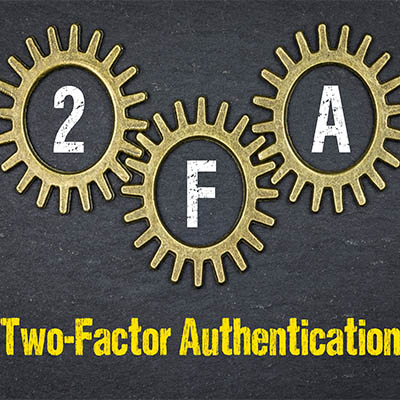
Here’s the thing: even if your password policy is airtight and perfectly followed, relying on passwords alone isn’t enough anymore to secure your business. Some of today’s threats are just too capable of cracking them. In order to really preserve your business’ security, most security professionals (like us) recommend implementing two-factor authentication—however, it pays off to consider your options, and how much (if any) added security each has to offer.
For this week’s tip, let us consider the different ways to implement 2FA.
Let’s make something clear from the start:
Two-factor authentication of any kind is better than just relying on a password. After all, a password can be cracked, stolen, or guessed. Adding a second requirement for a proof of identity will prevent that from enabling access to your accounts so easily. Therefore, while some forms are often more reliable than others, two-factor authentication is always something to implement wherever possible—particularly in the workplace.
Types of Two-Factor Authentication
2FA comes in all shapes and sizes:
Text Messages
Chances are this is the form of 2FA that most people were first introduced to, as it simply requires you to provide the code that you receive to your mobile device via SMS. This method is simple to pick up, making it easily accessible for any user and convenient. However, with the prevalence of phishing today amongst other considerations, 2FA through SMS is perhaps the least secure option, but it will still do in a pinch.
Applications
Next, we have the 2FA that functions by generating a code for the user to input into when prompted. Using these kinds of applications effectively turns a mobile device into the key for a lock, as a user isn’t going to get past the lock without access to their device. This makes the successful implementation of this form of 2FA heavily reliant on the likelihood that your users will both keep their devices charged and have them with them whenever they are needed.
Physical Devices
This variety of user authentication—where a physical token is plugged into a device or activated—has seen a resurgence in popularity in recent years, largely due to the rise in phishing attacks and other scams. While these keys come at some financial cost, they have been acknowledged as a successful and secure means of ensuring that someone is who they claim to be as they access digital resources.
Biometrics
Alternatively, we have also seen a rise of authentication wherein the user is the key, providing an identifier (like a fingerprint) to the scanner in order to secure access. While this form of authentication is undeniably (and sometimes literally) handy, it can be somewhat temperamental and lead to inaccuracy at times.
So, Which Type of 2FA is Best?
In simple terms: whatever kind you will actually use.
While they may not all be equally secure, any of the above options are more secure than just relying on a password alone. Data is just too valuable to be taken for granted nowadays, so if it is implemented and utilized correctly, any variety of two-factor authentication will ultimately benefit your business’ data and network security strategies.
We can help you put two-factor authentication in place, as well as any other cybersecurity measure or productivity tool your business could benefit from. Find out more about all we can do by calling (212) 796-6061 today.
